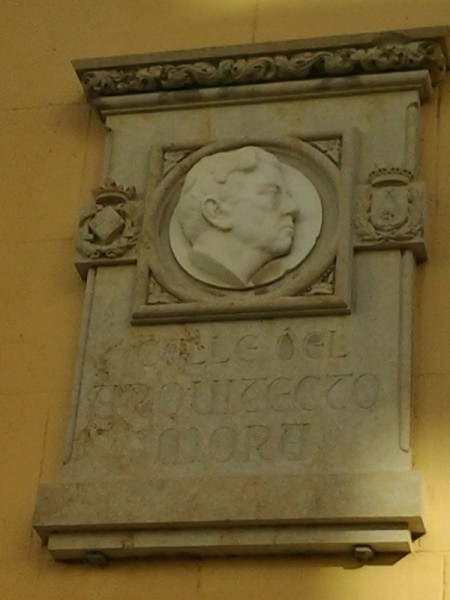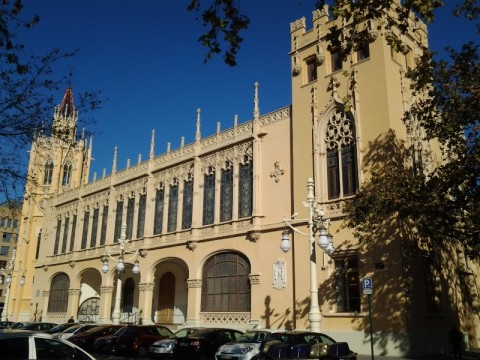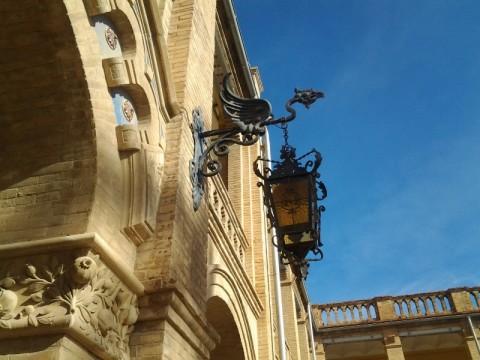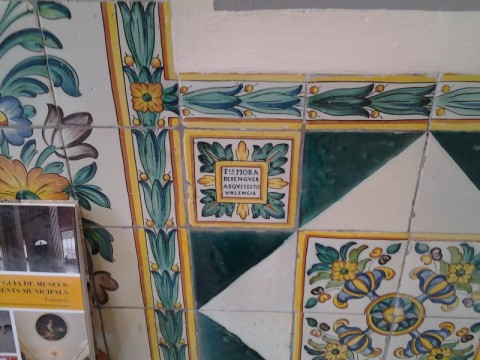Thousands of people visit Gaudí’s monuments in Barcelona, and his name appears in films such as Vicky, Christina, Barcelona, Gaudí Afternoon and Antonioni’s The Passenger; and yet Valencia has its own, lesser known architect, who lived in the same epoch and died in a similar way.
Francisco Mora and Berenguer was born in Sagunto in 1875 but studied architecture in Barcelona from 1890, where he was a regular visitor to Gaudí’s studio. Gaudí died after being hit by a tram, Mora by a lorry while driving back to Valencia in 1961 from Barcelona, accompanied by his son.
Mora’s best known work in Valencia was undoubtedly the Colon Market, but the more you look into his career, the more you realise how truly prolific he was. See our article on Colón Market here:
https://valencia-international.com/colon-market/
At a first glance, Colon market is impressive, but if you look closer you start to see more, especially on the façade nearest to Calle Jorge Juan. There you can see enough wildlife to stock a zoo, with turkeys, rabbits, geese, crabs, scallops, hens, bats, snails, lobsters and cows, as well as oranges, pine cones and sheaves of corn.
At least it’s considerably more attractive than the gas factory that previously occupied the plot.
Mora’s second best known building is probably the one he designed for the Valencia Expo of 1909, the Town Hall Pavilion, or Municipal Palace; sadly under-used today, apart from a modest library on the first floor.
The street that runs adjacent bears Mora’s name, but it is his work that speaks for him and is admired, although few know his name.
Another outstanding work is the San Juan de Dios Hospital near the Malvarrosa beach, originally designed for children suffering from tuberculous cervical lymphadenitis, better known as scrofula, but just as unpleasant.
Like Gaudí, Mora also has religious works, but his are two humble churches, La Purisima Concepción, hidden away at La Punta, built in 1907, and the church of San José de la Montaña; although unlike Gaudí, at least he finished both.
He was also responsible for the reform work on the Apostles’ Gate of the Cathedral, where the Tribunal de las Aguas takes place, although he never got his own cathedral.
He also reformed the façade of the Town Hall, along with the Catalan architect Carlos Carbonell; and if you go inside the bookshop there, the delightful shop assistant will show you a ceramic tile signed by the man himself.
Across the Town Hall square are two more Mora buildings at numbers 22 and 24, Casa Suay Bonora and Casa Noguera
Mora was the Town Hall’s official architect from the tender age of 26, when most of today’s architects are just wondering whether to do that second Master’s, as he had been previously in Gandesa and Tortosa in Tarragona province, and was largely responsible for the urbanization of the Ensanche, the area around Calle Colon. He was also a professor at the Industrial School in Avenida Reino de Valencia, which he also designed in 1925.





